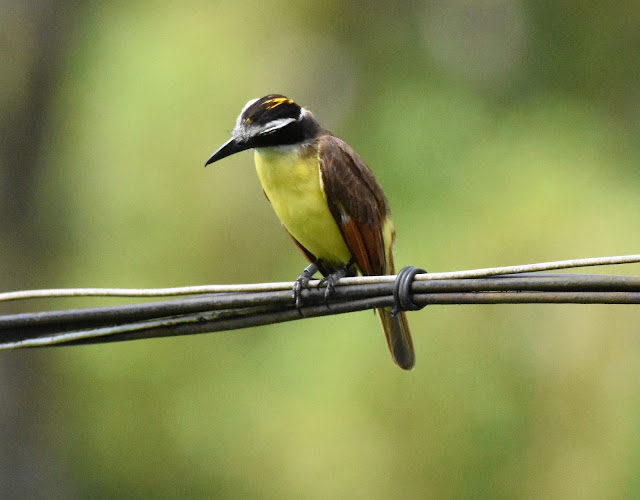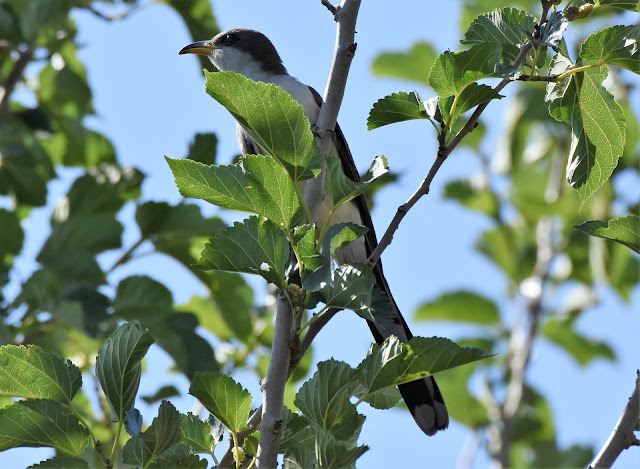 |
| I love the cold. I love winter. Unfortunately, I don't get to bird often in it. Birding with my bud, Kathie Brown was a lot of fun. We found lifers Great Cormorants, a Black-legged Kittiwake and Purple Sandpipers(they are not purple!) |
This year my goal is to reach 1000 life birds to celebrate my anniversary as a birder. I, as of this date, have reached the 900 life bird mark. It took two months of research to hit this important landmark.
 |
| My favorite habitat, the grasslands of Southern Arizona finally introduced me to my beautiful lifer, the Lapland Longspur |
I read manuals. I researched online diaries. I listened to bird calls and studied habitat. And I also set up an outline on how I would attempt to find certain birds. I really enjoy the energy that goes into the work. To help memorize the names, I write them down over and over on paper and say their names out loud to make the writing-to-memory transfer.
This year I've taken you to Maine and Mexico City. We'll also be exploring this summer the planned adventures from both Trinidad and Maui islands. It is serious business, but with that said, I have enjoyed the journeys getting to 900. Without further ado, I'll start at 800. Let's get started.
At 800, we were in Costa Rica searching for birds in a preserve known as Caño Negro along the Nicaraguan border. It is here our boat tour stopped to look at a beautiful Great Potoo. The boat nearly tipped over as we all got excited about observing this sleeping bird on a branch. It took awhile for our eyes to find this very well camouflaged bird.
Costa Rica helped keep the life bird tick going strong, day after day.
 |
| I love this pic of Micheal and Gordon. Birding takes us to the most incredible and magical spaces on our planet. |
At 810, we discovered the beautiful Purple-throated Mountain-gem. It's a hummingbird. At this point, we were in the Monteverde Cloud Forest. This bird is a stunner.
During our final days in Costa Rica, we stopped at Rancho Naturalista for a special hummer called the Snowcap.
He would make 820 on my life list. Rancho Naturalista was a lot of fun and we had a great day out with Lisa and Sergio.
Thanks to Sergio, friend and guide, we stopped on university grounds near Cartagena to spy a really cool looking heron known at the Boat-billed Heron. This would make life bird 830 in the same day! I have since seen this bird several times. Often they are quite hidden, so to have this one out in the open was very special.
Within that very same time period, in the Talamanca Highlands of Costa Rica, I added this beautiful Sooty-capped Chlorospingus, making it life bird 840. Almost every location in Costa Rica is rich for new birds! It would be hard to pick a favorite place out of our trek there, but I really did enjoy the misty beauty of the Talamanca Highlands. My life birds in Costa Rica ended at 846. Here's where it begins to get interesting.
 |
| female Belding's Yellowthroat |
I began to miss Mexico. In October of last year, I flew to Baja California to find the Belding's Yellowthroat(#850). It was my first major mission chasing endangered birds. This was a truly exciting trip in a very beautiful location. I eventually found these yellowthroats and was very happy to add them to my observation sightings. Afterwards, my non-birding friends and I drank all day at the beach. In between those months, I added several wintering birds in Maine to the list.
 |
| Like Manakins, Sparrows get me excited! This endangered sparrow is definitely one of the highlights from this year! |
Then I reached 860 outside of Mexico City where I hired the services of bird guru Rafa Calderon for a difficult and endangered sparrow. The area was too dangerous for me to explore on my own, hence the help of Rafa and driver Gerardo. Plus driving in Mexico City is a terrible idea! Also of note in this category, I added two other yellowthroats, the endangered Black-polled and the not endangered Hooded Yellowthroat species. While I could have found the Hooded Yellowthroat on my own, getting to the only known spot where the Black-polled Yellowthroats are would have been a nightmare.
 |
| Carib Grackle |
For those of you who follow this blog, this is where the new material begins. My first several days in Trinidad would quickly mark my journey towards the 900 mark. The first bird I saw out of the airport was the Carib Grackle. I can honestly tell you that THIS grackle does look somewhat different. It has a different type of call and appears to be a smaller version of the Great-tailed Grackle. It marks 870.
As I made my way up to Asa Wright(a future post), I saw the very common Silver-beaked Tanager. This bird is found everywhere on this island and not difficult to find at all.
 |
| Golden-headed Manakin |
Then 890 would happen. The final two birds I'll speak about in greater detail in the upcoming posts over the next several weeks. One of the reasons why I am in Trinidad right now is to study the manakins. They are deep in the forest and I was so in love with the 2 species of manakin found on the Asa Wright grounds, that I didn't realize I was getting bit up by bugs. Some people love their owls. Some love hummingbirds. I am mesmerized by all things manakin. I watched them for several hours. As it was getting dark, I had only realized too late that I would pay the price for those observations. My body was covered in bug bites. Still, I wouldn't change a thing. I'll speak more of this species (and another!) in the upcoming Trinidad writes.
 |
| This bird really made a monstrous noise in the cave. Had I not known what I was hearing, I think I would have been scared for my life! |
I'd like to thank Yosanna, a guide at Asa Wright for number 900, the Oilbird. What a special and magnificent way to end the 800's. The game is difficult now. There's no way around it. There's a lot of planning that goes into such events. I rehearsed my photo shoot with this particular species 2 weeks before I saw them. I'd go out at sunset and work with my night settings on my camera for practice. These birds are found in dark caves and it was an amazing experience. Again more on that experience in a few weeks.
 |
| At the entrance to the cave of the Oilbirds with Yosanna. I look like a natural disaster yet Yosanna maintains her composure and dignity like a pro. I don't know how she does it, but this desert rat looks like a mess. I'm not used to all the moisture! Anyhow, we celebrate 900! |
I am now quite a ways into the 900 category. I have one more big excursion to do. I am looking for the Blue-and-Yellow Macaws at Nariva Swamp. I'm still in Trinidad hiding out from the Arizona heat. It has been an amazing trip and worth all the physical pains. More on that later. Until next time.....







































































